Best Shoes for Kids with Tarsal Coalition — The Best Treatment for Your Child’s Foot Pain!

Has your child been diagnosed with tarsal coalition? Does your child have a hard time performing daily activities due to pain and stiffness? Tarsal coalition is a condition most often seen in children and adolescents in which some of the bones of the rear and mid-foot are fused together. The best shoes for kids with tarsal coalition help distribute the child’s weight, stabilize the foot, limit motion at the joint, and relieve pain.
Don’t Take the “Wait and See Approach” – Be Proactive!
It’s important that you don’t leave this condition untreated as tarsal coalition can cause limping, muscle spams and frequent ankle sprains. I always recommend parents be proactive and don’t take the “wait and see approach” when it comes to treating their children’s foot condition
It is also well known that tarsal coalition can cause flat feet. Do your child’s feet have any or all of the following conditions?
- Collapsed and flattened arches.
- Heel is deviated away from the midline.
- Front of the foot is pushed out (like a duck).
I am going to show you a list of the best shoes for kids with tarsal coalition based on my many years of shoe fitting experience.
I have helped hundreds of children with foot and leg pain find the correct type of shoes to significantly reduce or fully eliminate their pain. However, from all of the children that I have been able to help, only two of them were dealing with tarsal coalition, as this condition is not common and appears in adolescence when the bones grow and harden. This means that a child typically has no symptoms until between the ages of 8 and 16.
One of the children I helped was treated with the correct type of shoes and orthotics, followed by physical therapy. Most children can be treated without invasive treatments such as surgery. However, the other child that came to the store had already gone through surgery as he was experiencing severe symptoms and the condition was interfering with his daily activities.
The 4 Most Common Symptoms of Tarsal Coalition
Below you can find the 4 most common signs of children with tarsal coalition but keep in mind that each child may experience symptoms differently:
- Pain on the outside and top of the foot.
- Rigidity and stiffness in the affected foot.
- Muscle spasms.
- Recurrent ankle sprains.
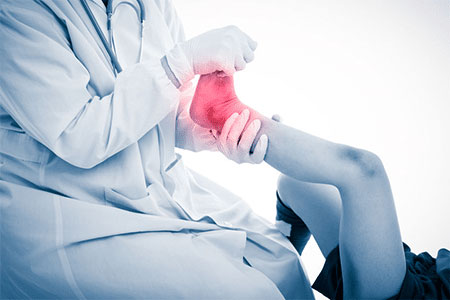
What is Tarsal Coalition? – Examples of Kids with Tarsal Coalition
Tarsal coalition is a type of flat foot. There are 2 different types of flatfoot, flexible or rigid, and tarsal coalition belongs to the category of rigid flatfoot.
In flexible flatfoot, the foot has a normal arch at rest (not standing or walking), but it disappears once it comes in contact with the ground. In rigid flatfoot, the arch is not present, whether bearing weight or not.
Rigid flat feet are usually a result of abnormal formation of the joint and/or bones but can result from neglected flexible flat feet.
When children have rigid flat feet, it creates a chain reaction of misalignment up the rest of their bodies. This results in abnormal strain and pressure acting not only on their feet, but on their ankles, knees, hips and back. The good news is that the correct pair of shoes can help realign your child’s feet and legs, improving your child’s walking gait and overall posture.
Children with Tarsal Coalition — Before and After Images!
Let me show you an example of a child with a rigid flat foot and what a difference the correct type of shoes can make.
Before Image
Let’s start by taking a look at an image of a child with rigid flat feet standing barefoot. Do you notice how the feet are collapsing and turning inwards? The right foot, in particular, is the one that’s collapsing the most:
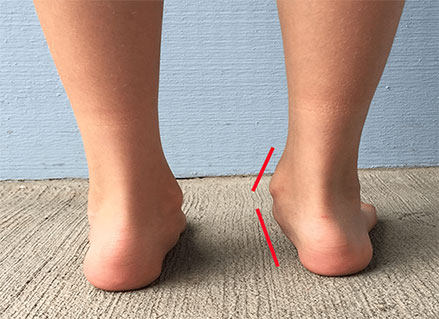
Before Image: Unsupportive Shoes
Now let’s take a look at an image of the same child wearing her current sneakers. Keep in mind that the sneakers this child was wearing were unsupportive and provided a soft heel counter. Do you notice how the child’s feet are still collapsing and turning inwards?
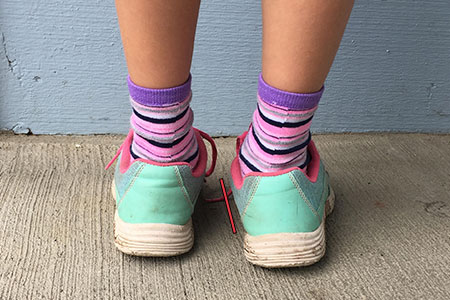
After Image: Supportive Shoes
Let’s see what happens when we fit that same child in a pair of the shoes I recommend. Do you notice how the child’s feet are a lot straighter? The shoes provide a substantial outsole and a firm heel counter that prevent the child’s feet from collapsing and turning inwards. This is not an orthopedic shoe, just a regular everyday sneaker that simply provides better support.
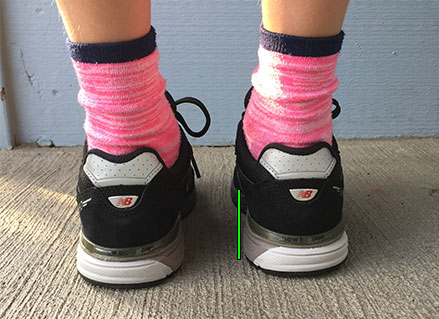
How to Treat Tarsal Coalition in Children?
I always recommend parents treat tarsal coalition conservatively. The goal is to end their pain by providing them with a pair of supportive shoes, and depending on the degree of your child’s flat feet we might need to fit an orthotic inside the shoes for extra support and stability.
Shoes with a substantial outsole and a firm heel counter can help distribute your child’s weight, stabilize their foot, limit motion at the joint, and relieve pain.
What Makes the Shoes I Recommend Effective for Treating Tarsal Coalition?
1️⃣Substantial Outsoles: This feature helps distribute your child’s weight and prevents your child’s feet from collapsing by stabilizing the feet. Let me show you the difference in support between one of the shoes I recommend and a different style. Do you notice how the shoe on the right has a more substantial and supportive outsole compared to the shoe on the left?
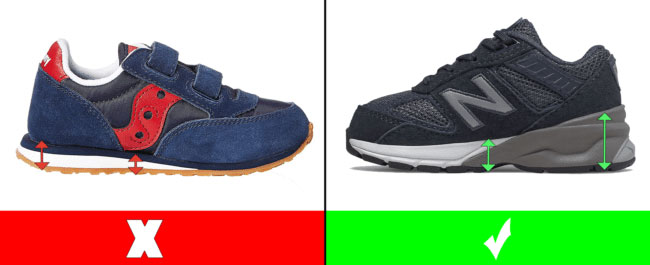
2️⃣ Firm Heel Counters: This feature also helps prevent your child’s feet from collapsing and turning inwards by stabilizing your child’s feet from the ankles. Let me show you the difference in ankle support between one of the shoes I recommend and a different style. When I press on the heel counter of the shoe on the right it feels firm and supportive, and when I press on the heel counter of the shoe on the left it feels soft and flimsy:

How to Retrieve Your Child’s Exact Foot Length and Shape
I am going to show you a selection of children’s shoes that provide these 2 features and that have proven to be the most effective ones for children with tarsal coalition. However, it’s extremely important that you order the shoes in the correct size or your child won’t get any of the benefits that the shoes have to offer.
That article helps parents determine their children’s exact foot size from home.
Now that you know your child’s exact foot size and what features your children’s shoes have to offer I will show you a selection of the best kids’ shoes for tarsal coalition. Disclosure: Keep in mind that we may receive commissions when you click our links and make purchases.
Best Kid’s Shoes for Tarsal Coalition
The shoes I recommend below are available in medium (M), wide (W), and extra wide (XW) widths, so make sure that you order your child’s foot width accordingly.
Little Kid Shoe Sizes (10.5 to 3)
- Shoe style Fresh Foam X 860v13
- Available in medium and wide widths
- Lace-up closure
- Fresh Foam midsole cushioning is precision engineered to deliver an ultra-cushioned, lightweight ride
- Ultra Heel design hugs the back of the foot for a snug, supportive fit
- Order this shoe half a size larger than your child’s current foot size
- Shoe style RaveRun by New Balance
- Available in medium, wide, and extra wide widths
- Lace-up closure
- Fresh Foam midsole cushioning is precision engineered to deliver an ultra-cushioned, lightweight ride
- Ultra Heel design hugs the back of the foot for a snug, supportive fit
- Order this shoe half a size larger than your child’s current foot size
- Shoe style Axon by Saucony
- Available in medium and wide widths
- EVA midsole provides increased shock attenuation, responsive cushioning and lasting durability
- Cushioned footbed
- Order this shoe a whole size larger than your child’s current foot size
- Shoe style Axon by Saucony
- Available in medium and wide widths
- EVA midsole provides increased shock attenuation, responsive cushioning and lasting durability
- Padded tongue and collar
- Cushioned footbed
- Order this shoe a whole size larger than your child’s current foot size
- Shoe style Fresh Foam X 860 V13 by New Balance
- Available in medium and wide widths
- Lace-up closure
- Dual-layer midsole construction featuring top-bed foam cushioning and underfoot Fresh Foam X
- Order this shoe half a size larger than your child’s current foot size
- Shoe style Fresh Foam X 860 V13 by New Balance
- Available in medium and wide widths
- Lace-up closure
- Fresh Foam midsole cushioning is precision engineered to deliver an ultra-cushioned, lightweight ride
- Order this shoe half a size larger than your child’s current foot size
- Shoe style RaveRun by New Balance
- Available in medium, wide, and extra wide widths (fits high insteps)
- Lace-up closure
- Dual-layer midsole construction featuring top-bed foam cushioning and underfoot Fresh Foam X
- Order this shoe half a size larger than your child’s current foot size
- Shoe style Fresh Foam X 860v13 by New Balance
- Available in medium and wide widths
- Lace-up closure
- Strong rubber outsole and cushioned midsoles
- Order this shoe half a size larger than your child’s current foot size
- Shoe style TR14 LTT by Saucony
- Available in medium and wide widths
- Lace-up closure
- Foam padding placed around your ankle collar and under the tongue for an incredibly comfortable fit and feel
- Comfort sockliner molds to your foot with padding in the heel for ultimate cushioning at heel-strike
- Engineered mesh for structure, stretch and enhanced breathability
- Order this shoe half a size larger than your child’s current foot size
- Shoe style Cohesion TR14 LTT by Saucony
- Available in medium and wide widths
- Lace-up closure
- Foam padding placed around your ankle collar and under the tongue for an incredibly comfortable fit and feel
- Comfort sockliner molds to your foot with padding in the heel for ultimate cushioning at heel-strike
- Engineered mesh for structure, stretch and enhanced breathability
- Order this shoe half a size larger than your child’s current foot size
Big Kid Shoe Sizes (3.5 to 7)
- Shoe style Fresh Foam Arishi by New Balance
- Available in medium and wide widths
- Lace-up closure
- Fresh Foam midsole cushioning is precision engineered to deliver an ultra-cushioned, lightweight ride
- Ultra Heel design hugs the back of the foot for a snug, supportive fit
- Order this shoe half a size larger than your child’s current foot size
- Shoe style Fresh Foam Arishi v4 by New Balance
- Available in medium, wide, and extra wide widths
- Lace-up closure
- Fresh Foam midsole cushioning is precision engineered to deliver an ultra-cushioned, lightweight ride
- Ultra Heel design hugs the back of the foot for a snug, supportive fit
- Order this shoe half a size larger than your child’s current foot size
- Shoe style Kinvara by Saucony
- Available in medium and wide widths
- EVA midsole provides increased shock attenuation, responsive cushioning and lasting durability
- Padded tongue and collar
- Cushioned footbed
- Order this shoe a whole size larger than your child’s current foot size
- Shoe style Kinvara by Saucony
- Available in medium and wide widths
- Foam padding placed around your ankle collar and under the tongue for an incredibly comfortable fit and feel
- Comfort sockliner molds to your foot with padding in the heel for ultimate cushioning at heel-strike
- Engineered mesh for structure, stretch and enhanced breathability
- Order this shoe half a size larger than your child’s foot size
- Shoe style RaveRun by New Balance
- Available in medium, wide, and extra wide widths (fits high insteps)
- Lace-up closure
- Dual-layer midsole construction featuring top-bed foam cushioning and underfoot Fresh Foam X
- Order this shoe half a size larger than your child’s current foot size
- Shoe style RaveRun by New Balance
- Available in medium, wide, and extra wide widths
- Lace-up closure
- Fresh Foam midsole cushioning is precision engineered to deliver an ultra-cushioned, lightweight ride
- Ultra Heel design hugs the back of the foot for a snug, supportive fit
- Order this shoe half a size larger than your child’s current foot size
- Shoe style Fresh Foam X 880v12 by New Balance
- Available in medium and wide widths (fits high insteps)
- Lightweight EVA foam cushioning in the midsole and padded heel increases comfort
- Firm heel counter
- Supportive heel for active kids
- Breathable mesh upper
- Order this shoe a whole size larger than your child’s current foot size
- Shoe style FuelCell Propel v5 by New Balance
- Available in medium and wide widths (fits high insteps)
- Lace-up closure
- Dual-layer midsole construction featuring top-bed foam cushioning and underfoot Fresh Foam X
- Order this shoe a whole size larger than your child’s current foot size
- Shoe style Kinvara 14 by Saucony
- Available in medium and wide widths
- Lace-up closure
- Lightweight mesh upper
- Fresh Foam midsole cushioning is precision engineered to deliver an ultra-cushioned, lightweight ride
- Order this shoe half a size larger than your child’s current foot size
- Shoe style Arishi Fresh Foam by New Balance
- Available in medium, wide, and extra wide widths (fits high insteps)
- Fresh Foam midsole cushioning is precision engineered to deliver an ultra-cushioned, lightweight ride
- Lightweight mesh upper
- Order this shoe a whole size larger than your child’s current foot size
- Shoe style Axon by Saucony
- Available in medium and wide widths
- EVA midsole provides increased shock attenuation, responsive cushioning and lasting durability
- Cushioned footbed
- Order this shoe a whole size larger than your child’s current foot size
Make sure that your child ties the shoes properly to get the full support and stability that the shoes have to offer.
Are Any Other Shoe Choices Available?
if your child happens to have narrow feet contact me directly and I will send you other specific shoe recommendations:
If you try any of the shoes I recommend for a period of two months and your child’s walking gait doesn’t improve or your child still complains about foot or leg pain, then it’s time to try an orthotic inside the shoes for extra support.
Best Orthotics for Kids with Tarsal Coalition
Orthotics are simply arch support devices that provide extra support to targeted areas of the feet. When fitted inside the correct pair of shoes orthotics can be an effective solution to your child’s foot problems.
I have fitted and tested several different orthotics but there is one specific style I recommend that provides excellent arch and heel support but it’s not as invasive as other orthotics, meaning that it allows the child’s muscles to develop on their own.
Fits Toddler Shoe Size 5 up to Big Kid Shoe Size 3
- Fits a toddler shoe size 5 up to a big kid shoe size 3
- Medically approved insoles with targeted cushion and support
- Deep heel cup with strong arch support
- Made from lightweight yet supportive cushioning material with shock-absorbing heel and forefoot padding
- They can be trimmed to size with scissors if needed
Don’t forget to remove the original insoles of the shoes before placing the orthotic inside the shoes. If you fit the orthotic on top of the original shoe insoles, then you will be raising your kids’ feet, giving them the impression that their feet are coming out of the shoes. All of the shoes I previously recommended provide extra depth, which makes them ideal to fit orthotics.
If nonsurgical treatments do not relieve your child’s pain or improve their foot function, surgery may be considered. However, please remember that surgery should be used as a last resort since even though surgery can improve the long-term outcomes for your child with tarsal coalition, it can also be a stressful experience for you and your child.
If your child has already undergone surgery, your child’s doctor will recommend physical therapy or supportive shoes and orthotic devices, to help your child restore their strength and range of motion after surgery and recovery. The shoes recommended after surgery are the same as I would recommend a child should wear before surgery.
Let me know if you have any questions in the comment section below or you can email me directly at:








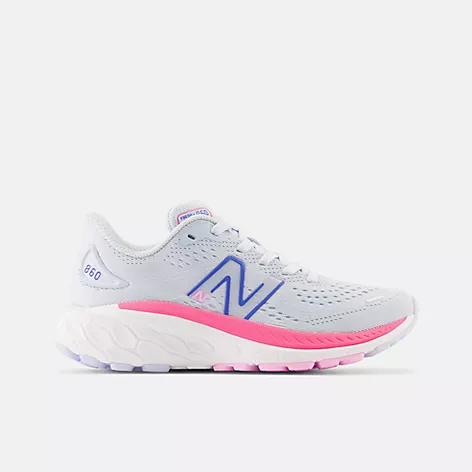


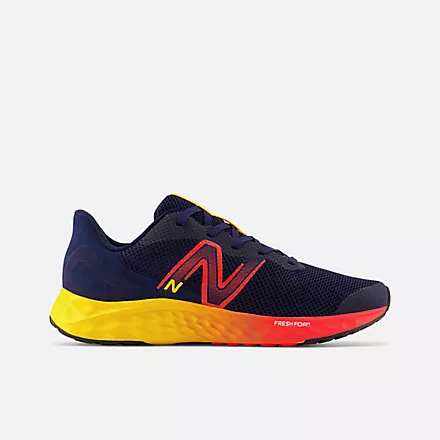
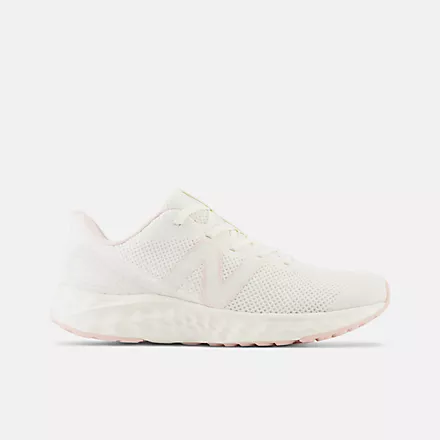


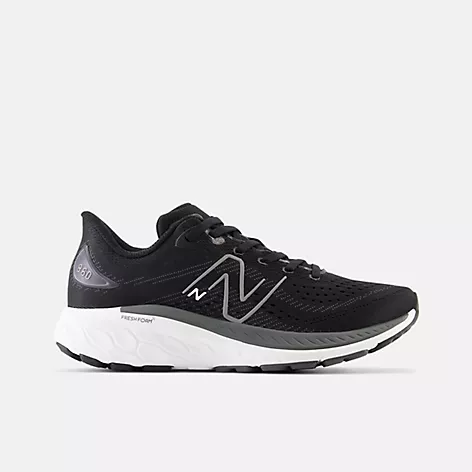





Hey, thanks for sharing this informative blog. It helps me to choose a good pair of shoes for my kid.
Hello David,
I am glad that you find the article informative.
Dear Sir,
Greetings for the season.
My bests friends son has this problem, yesterday only we came to know. Kid is 15-16 year old. They stay in Pune. How can we contact you.
Kindly guide.
Thanks & Regards
Rajeev Ravi Acharya
9096871177 Nagpur (WatsApp)
Hello Rajeev,
I suggest that you email me at: [email protected]